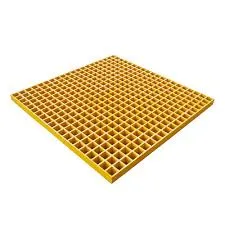
-
 Afrikaans
Afrikaans -
 Albanian
Albanian -
 Amharic
Amharic -
 Arabic
Arabic -
 Armenian
Armenian -
 Azerbaijani
Azerbaijani -
 Basque
Basque -
 Belarusian
Belarusian -
 Bengali
Bengali -
 Bosnian
Bosnian -
 Bulgarian
Bulgarian -
 Catalan
Catalan -
 Cebuano
Cebuano -
 China
China -
 China (Taiwan)
China (Taiwan) -
 Corsican
Corsican -
 Croatian
Croatian -
 Czech
Czech -
 Danish
Danish -
 Dutch
Dutch -
 English
English -
 Esperanto
Esperanto -
 Estonian
Estonian -
 Finnish
Finnish -
 French
French -
 Frisian
Frisian -
 Galician
Galician -
 Georgian
Georgian -
 German
German -
 Greek
Greek -
 Gujarati
Gujarati -
 Haitian Creole
Haitian Creole -
 hausa
hausa -
 hawaiian
hawaiian -
 Hebrew
Hebrew -
 Hindi
Hindi -
 Miao
Miao -
 Hungarian
Hungarian -
 Icelandic
Icelandic -
 igbo
igbo -
 Indonesian
Indonesian -
 irish
irish -
 Italian
Italian -
 Japanese
Japanese -
 Javanese
Javanese -
 Kannada
Kannada -
 kazakh
kazakh -
 Khmer
Khmer -
 Rwandese
Rwandese -
 Korean
Korean -
 Kurdish
Kurdish -
 Kyrgyz
Kyrgyz -
 Lao
Lao -
 Latin
Latin -
 Latvian
Latvian -
 Lithuanian
Lithuanian -
 Luxembourgish
Luxembourgish -
 Macedonian
Macedonian -
 Malgashi
Malgashi -
 Malay
Malay -
 Malayalam
Malayalam -
 Maltese
Maltese -
 Maori
Maori -
 Marathi
Marathi -
 Mongolian
Mongolian -
 Myanmar
Myanmar -
 Nepali
Nepali -
 Norwegian
Norwegian -
 Norwegian
Norwegian -
 Occitan
Occitan -
 Pashto
Pashto -
 Persian
Persian -
 Polish
Polish -
 Portuguese
Portuguese -
 Punjabi
Punjabi -
 Romanian
Romanian -
 Russian
Russian -
 Samoan
Samoan -
 Scottish Gaelic
Scottish Gaelic -
 Serbian
Serbian -
 Sesotho
Sesotho -
 Shona
Shona -
 Sindhi
Sindhi -
 Sinhala
Sinhala -
 Slovak
Slovak -
 Slovenian
Slovenian -
 Somali
Somali -
 Spanish
Spanish -
 Sundanese
Sundanese -
 Swahili
Swahili -
 Swedish
Swedish -
 Tagalog
Tagalog -
 Tajik
Tajik -
 Tamil
Tamil -
 Tatar
Tatar -
 Telugu
Telugu -
 Thai
Thai -
 Turkish
Turkish -
 Turkmen
Turkmen -
 Ukrainian
Ukrainian -
 Urdu
Urdu -
 Uighur
Uighur -
 Uzbek
Uzbek -
 Vietnamese
Vietnamese -
 Welsh
Welsh -
 Bantu
Bantu -
 Yiddish
Yiddish -
 Yoruba
Yoruba -
 Zulu
Zulu
Innovative Applications of FRP Chemical Products in Modern Industries
The Role of FRP Chemical Products in Modern Industry
FRP, or Fiber-Reinforced Plastics, has emerged as a pivotal player in various industries due to its unique properties and versatility. These composite materials combine a polymer matrix with fibers, such as glass, carbon, or aramid, to create a durable and lightweight product. The growing demand for FRP chemical products can be attributed to their exceptional strength-to-weight ratio, resistance to corrosion, and ability to withstand extreme conditions.
The Role of FRP Chemical Products in Modern Industry
Corrosion resistance is another major benefit of FRP chemical products. In environments where exposure to harsh chemicals and extreme weather conditions is commonplace, FRP outperforms many conventional materials. For instance, in the chemical processing industry, FRP is frequently used for tanks, pipes, and structural components, as they do not rust or corrode, ensuring longevity and reducing maintenance costs.
frp chemical product

The versatility of FRP also allows for customization in terms of color, shape, and mechanical properties. Manufacturers can tailor the fiber content and matrix materials to achieve specific performance characteristics. This adaptability opens up a range of applications beyond industrial use, including consumer goods and construction. For example, FRP can be molded into complex shapes for architectural elements, providing aesthetic beauty and structural integrity.
Sustainability is becoming increasingly important in manufacturing, and FRP chemical products can contribute positively in this regard. Compared to traditional materials, the production of FRP can be less energy-intensive, and its longevity reduces the need for frequent replacements. Moreover, advances in recycling technology are making it possible to reclaim and repurpose FRP materials, further enhancing their environmental benefits.
In conclusion, FRP chemical products are revolutionizing various sectors through their unique properties and adaptability. As industries continue to innovate and seek sustainable solutions, the demand for FRP is likely to increase, solidifying its role as a key material in the future. Embracing these advanced composites will enable companies to not only enhance their operational efficiency but also contribute to a more sustainable industrial ecosystem.









